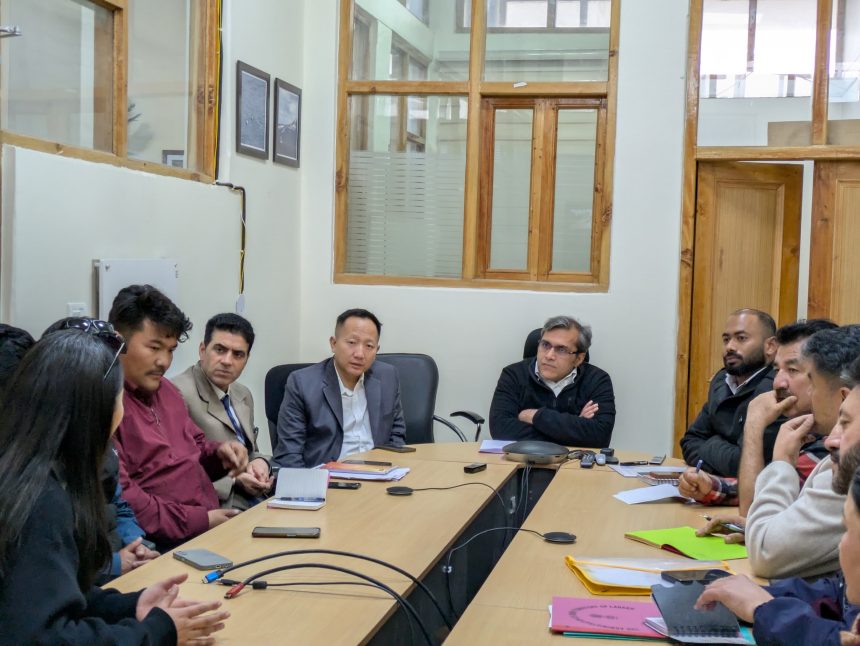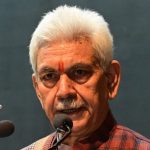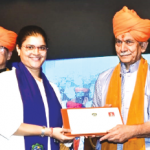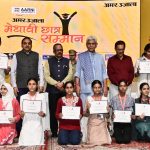Leh, April 10: The Principal Secretary, Industries and Commerce, Ladakh, Sanjeev Khirwar, Thursday chaired a key meeting at the Civil Secretariat to review the functioning of Common Facility Centres (CFCs) in the Changthang region. He also took the stock of facilities available at common facility centres (CFCs)
The meeting began with a formal introduction of all participants, followed by a lively and interactive session. Attendees actively voiced their concerns, shared personal experiences and offered thoughtful suggestions. The core theme of the discussion revolved around devising effective strategies to retain individuals—particularly the younger generation—in traditional livelihoods, specifically the age-old practice of pashmina rearing. During the deliberations, Khirwar highlighted a critical issue— the diminishing interest in traditional occupations due to insufficient financial incentives. He underlined the urgent need to improve the economic conditions and remuneration of farmers and herders engaged in pashmina production.
He emphasised that unless these communities are provided with sufficient income and a sense of economic security, they may be compelled to abandon their ancestral trades in pursuit of more lucrative, modern alternatives. Ensuring better economic returns, he said, is not only essential for sustaining this heritage-based livelihood but also crucial for encouraging the youth to take pride in and continue these time-honoured practices. The challenges faced by local entrepreneurs were also thoroughly discussed. One of the major concerns raised was the need for stronger branding and marketing of Ladakh pashmina. The Principal Secretary stressed the importance of obtaining certification and a Geographical Indication (GI) tag to ensure authenticity and uniqueness. He further emphasised the need for quality checks and standardisation to enhance trust and recognition in wider markets, adding that the value chain should, as far as possible, be captured within Ladakh. Councillors from the region actively participated in the discussion, sharing on-ground realities and offering suggestions. Key focus areas included the need to increase productivity, aggregate local demand for dehaired pashmina, fulfil requirements for spinning machines, and standardise the quality of pashmina products.
A significant decision taken during the meeting was the formation of a dedicated committee under the leadership of the Deputy Commissioner, Leh. This committee will work closely with local entrepreneurs, experts, and stakeholders to assess and identify gaps in the entire pashmina value chain—from herding and raw wool collection to dehairing, spinning, weaving, marketing, and export. The objective is to streamline processes, improve infrastructure, and address quality control and certification challenges.
The committee was tasked with submitting a comprehensive report outlining practical solutions and strategies to strengthen the sector within 10 days. The broader aim is to enhance the viability and visibility of Ladakh pashmina in both domestic and international markets, ensuring it remains a sustainable source of livelihood. By professionalising the sector and retaining a robust value chain within the region, the initiative seeks to inspire and empower the younger generation to continue this culturally significant and economically valuable tradition.









